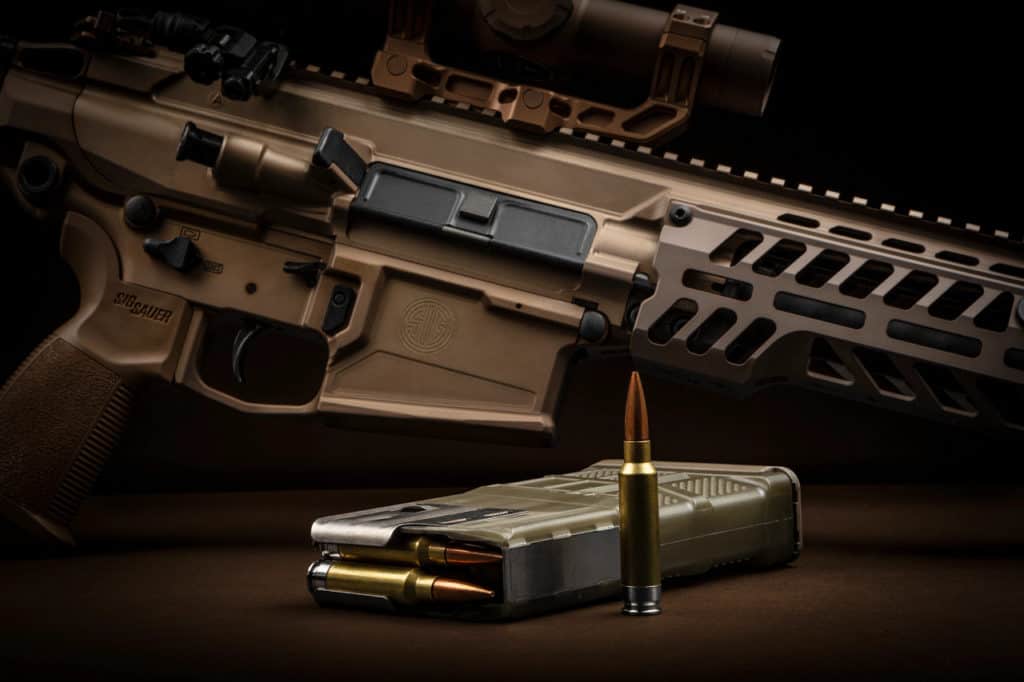
On April 20, 2022, the U.S. Army awarded Sig Sauer the Next Generation Squad Weapon System(NGSW) contract. The XM5 and XM250 weapon systems that won the contract are impressive and should not be ignored; however, the 6.8×51(.277 Fury) cartridge that was simultaneously adopted could change the face of modern-day hunting ammunition.
The 277 Fury has the potential to become the next great hunting cartridge. It is optimized for 16-inch barreled rifles and boasts impressive performance. It was adopted by the U.S. Army, which generally means it will succeed in the civilian market.
While it is impressive, the higher pressures limit what rifles can be chambered in the cartridge.
Affiliate Disclosure: This article may contain affiliate links. When you use these links, I earn a small commission from each sale generated at no cost to you. This commission helps me continue to put out free content. I work a full-time job that I am very happy with; therefore, I don’t need this commission and am not obligated to speak highly of any product. Everything written is my own opinion: the good, the bad, and the ugly.
What is the 277 FURY?
The .277 FURY cartridge is the first significant breakthrough in ammunition development since the copper jacket. The brass-cased version of the .277 is a 7.62 Nato or .308 Winchester necked down to .270. While the measurements vary between them, this was done a few times before with the 270-08, 270 Redding, and 270 Schuster.
“The revolutionary SIG FURY ammunition is the most technically advanced leap in smalls arms ammunition in over 150 years, this turns your intermediate rifle platform into magnum performance without the added weight or length…” – Ron Cohen, President & CEO, SIG SAUER.
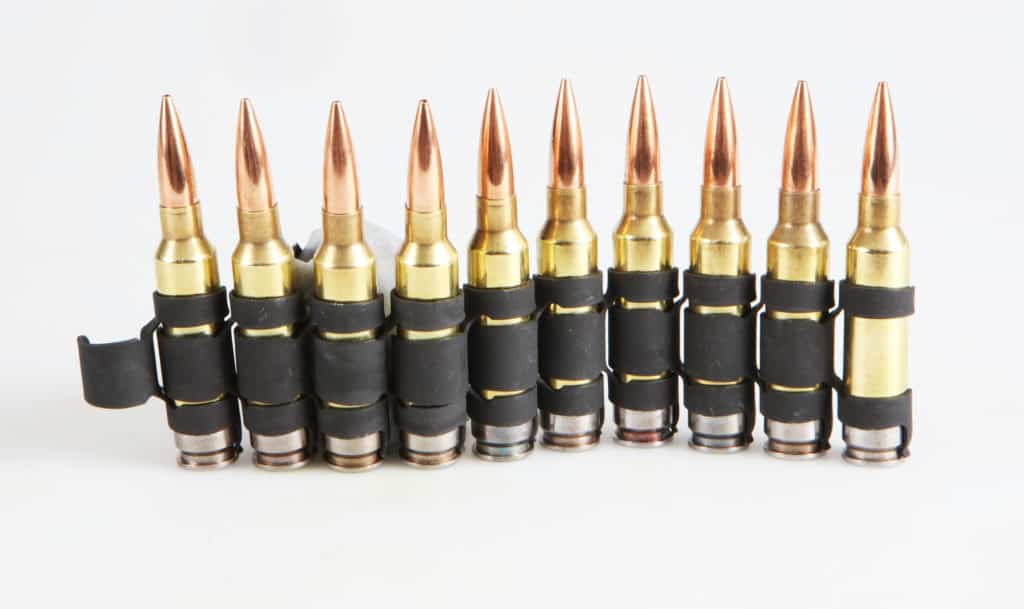
Furthermore, where the .277 SIG FURY outshines its competitors is the case design. While you can use the standard brass casing for the .277 Fury, the real benefit comes from the specialized case.
The 277 Fury uses a hybrid bi-metal case that is 20% lighter than the standard brass case. As a result, it produces 20-25% greater energy and produces “Hyper Velocity,” in their words. What is Hyper Velocity? The actual velocities the Army is getting with their ammunition are only known to those with high-level security clearances. However, their published data shows that their commercially loaded ammunition can propel a 150 gr bullet at 2830 fps out of a 16-inch barrel…
The bi-metal case allows for much higher pressures than standard brass does. This means that you can get higher pressures in smaller case designs. Hence the nearly 270 Winchester Short Mag(WSM) performance out of a 308-length cartridge. If adapted to other cartridges, this case could revolutionize ammunition development.
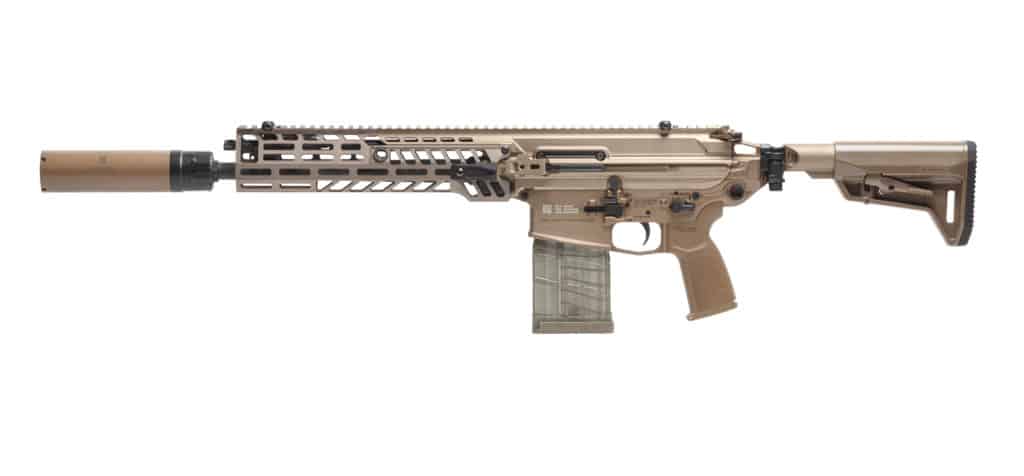
Classic Hunting Cartridges Adopted by the Military
Historically speaking, most, if not all, cartridges adopted by the military in mass become traditional hunting cartridges almost immediately. It is easy to see starting with the 45-70 GOVT and working up to the 5.56 NATO.
45-70 GOVT
First, the 45-70 gained immediate notoriety amongst hunters purely because of its availability. The cartridge was one of the first available and performed well. The market hunters of the day took notice. This fact, combined with being available at many military outposts stretched across the West, it was sure to become a classic. It has outlasted many other cartridges of the era and is still extremely popular and capable with modern smokeless loads. Many manufacturers still chamber rifles in the legendary 45-70 GOVT.
30-40 Krag
Next was the 30-40 Krag. Although spending the shortest amount of time as the U.S. Military’s cartridge of choice(I’m ignoring the 30-03), it was and still is a great big game hunting cartridge. Adopted in 1892, the Krag-Jorgensen rifle was the weapon of choice. Following the development of the 1903 Springfield, the Krag became obsolete and went for sale on the civilian market. The low cost necessary to obtain a surplus Krag made them very popular amongst hunters in North America.
The 30-06
The 30-06 needs no introduction. Adopted in 1906, the “thirty-ought six” spent nearly 50 years as America’s rifle cartridge of choice for combat. For a good reason. This cemented its legacy in American hunting culture; it’s a great hunting cartridge capable of taking down any game in North America with a well-placed shot.
7.62 NATO
The 7.62 NATO, or the 308 Winchester, was first adopted by the U.S. Military for the M14 rifle. This hard-hitting .30 cal bullet was the perfect package for a short-length action. The .308 case would become the basis for many popular hunting cartridges today, such as the 243 Winchester, 7mm-08, and now the .277 Fury.
5.56 NATO
The 5.56 NATO, or .223 Remington, has become one of America’s favorite varmint hunting calibers. It has been the standard combat rifle cartridge for the U.S. Military since the Vietnam War. The .223 is extremely versatile and is right at home in the AR platform it was designed for. The AR in .223 has become the first choice for many varmint hunters today. If a shot is well placed, this can be an excellent deer or antelope cartridge where state laws allow.
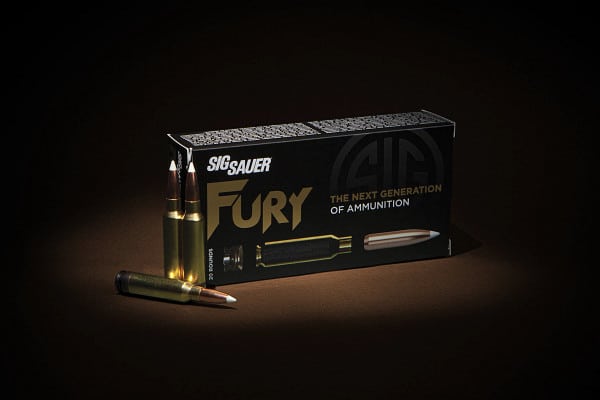
Is the 277 Fury the Ultimate Mountain Hunter’s Cartridge?
I believe the 277 Fury will be the next great mountain hunting cartridge. As stated before, it is a necked-down 308 Winchester casing, making it ideal for short action lengths. These short actions save weight over long actions, and we all know how important saving every ounce is for the elk or sheep hunter.
The ballistics below look similar to the 270 Winchester loaded with a 130-gr bullet. However, the calculations below were done with a heavier 150-grain bullet out of a much shorter case design and 16″ barrel. The fact that it was designed to perform in shorter barrel lengths is another reason the 277 Fury may prove to be the ideal mountain cartridge. Barrels are damn heavy, and getting the same performance out of a barrel that is 8 inches shorter than the standard 24″ sporting rifle will save a ton of weight and improve its maneuverability through the woods.
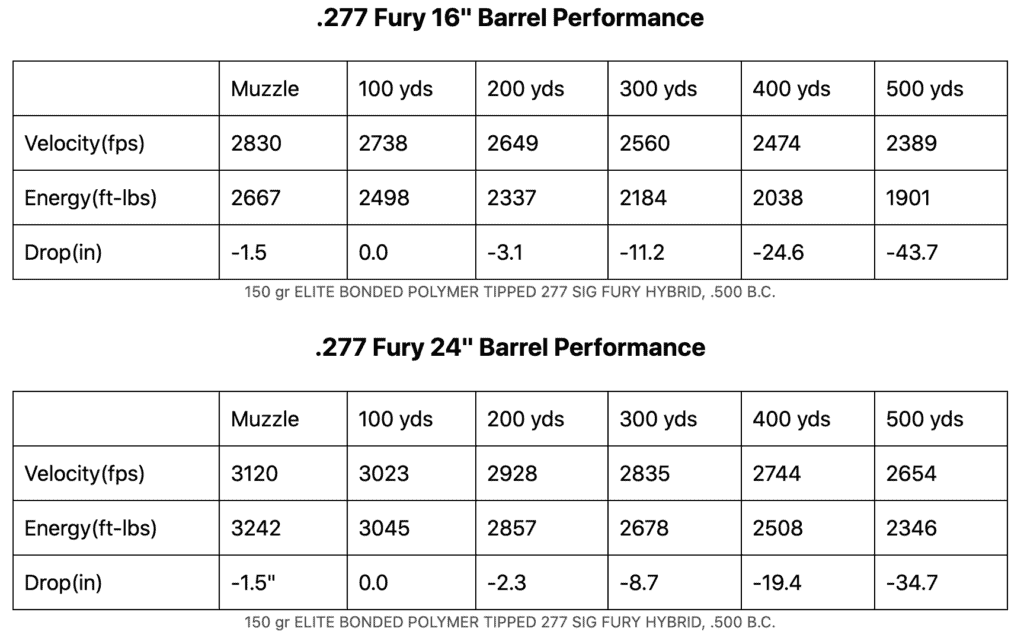
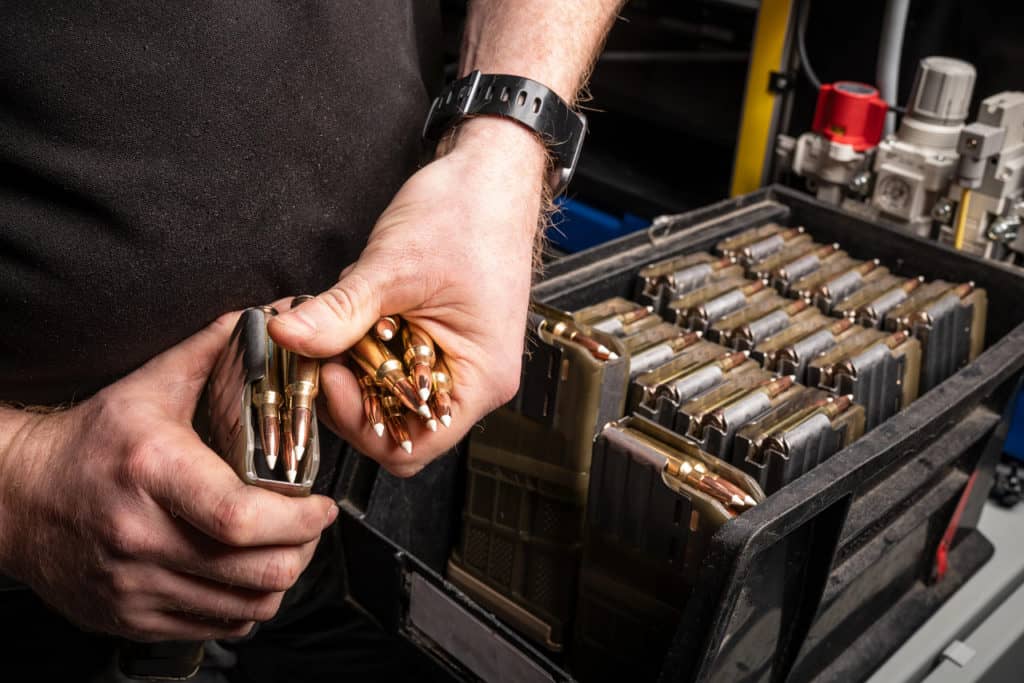
Current Limitations of the 277 Fury
The current limitations that I see with the new .277 Fury are the high pressures it was designed around. This is about the hunting market and not the Army’s NGSW. The SAAMI-approved pressure for the cartridge is 80,000 PSI, much higher than the 66,000 PSI that was the previous high. This pressure limitation was partly due to the use of a brass casing. Sporting arms on the market today may have never been tested at 80,000 PSI.
Use coupon code KTG10 to get 10% off your order of $150 or more at Brownells.
There are two sides to this equation. The first says that you should not go and chamber random rifles for this cartridge as the action itself may not be up to the task of staying together under that high of pressure. This is something that needs to be considered if thinking about chambering a rifle in the .277 Fury. The other side of the equation shows us that those high pressures are really only achievable through the use of the proprietary case.
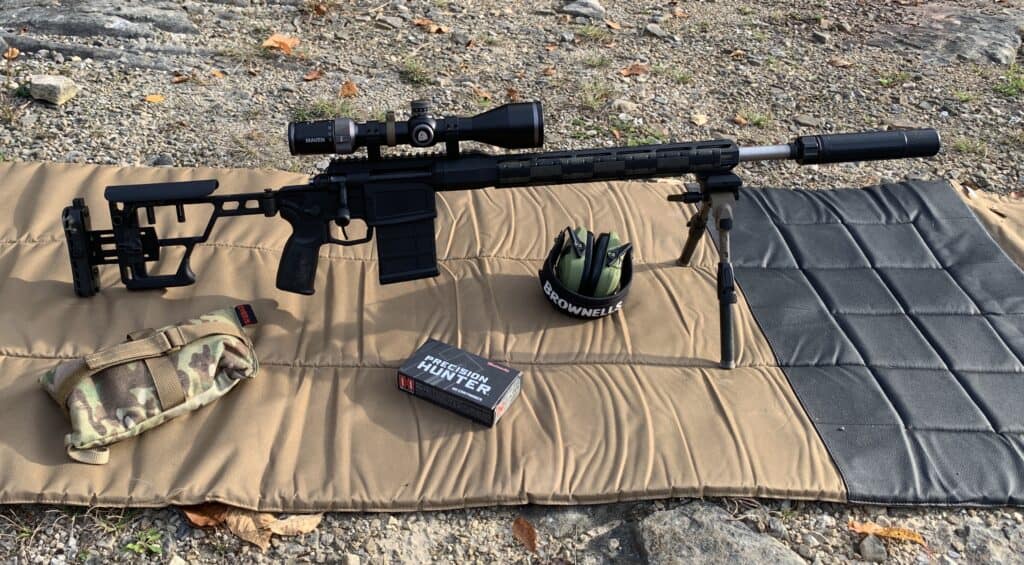
You can currently buy the 277 Fury proprietary cased ammunition from Sig Sauer’s website, which is reloadable. Under those circumstances, there are some potentially dangerous pressures if not handled correctly. What I believe we will see is different levels of loading similar to the 45-70. The 45-70 has multiple pressure levels that reloaders must abide by depending on their firearm.
To put it shortly, chambering any old rifle in .277 Fury could be catastrophic if not done right. Do your research and wait for good reloading data to become available.
Why I Believe the 277 Fury is the Future in Hunting Cartridges
The trend towards short barrel lengths and semi-automatic hunting arms cements the fact that the 277 Fury will walk amongst giants in the hunting cartridge world. The impressive ballistics, available bullet choices, and plentiful 308 brass waiting to be converted will be welcomed by hunters. I wouldn’t hesitate to jump on this one and can’t wait to get my hands on one.

Written by: Kurt Martonik
Kurt is a Gunsmith, Reloader, Hunter, and Outdoorsman. He grew up in Elk County, Pennsylvania, where he became obsessed with the world of firearms. Following high school, Kurt enlisted in the United States Air Force as a Boom Operator, where he eventually rose to the position of Instructor. After his military service, he attended the Colorado School of Trades(CST) in Lakewood, CO for gunsmithing. Following graduation, he accepted a job at C. Sharps Arms in Montana, where he worked as a full time stockmaker and gunsmith.
I will be curious to see how it performs in the field. That pressure makes for issues when components fail. When the rifles are new, probably not much of an issue, but as components fail in a field environment it could create for additional issues.
The case creates complexity which may ensure high costs, no matter the popularity. For hunting? For sizable game, a large wound channel would be preferable… at least to me.
All that said, I assume increased velocities will be the next push. However, the cost to benefit ratio may be for the average person.
Time will tell.
I agree with what you have to say on this. I don’t think I’ll be running out to buy one, but with past trends, it certainly seems like it will be popular on the civilian market. That may be 10-15 or even 20 years from now. Hopefully, the cost of components will cheaper by then as well.